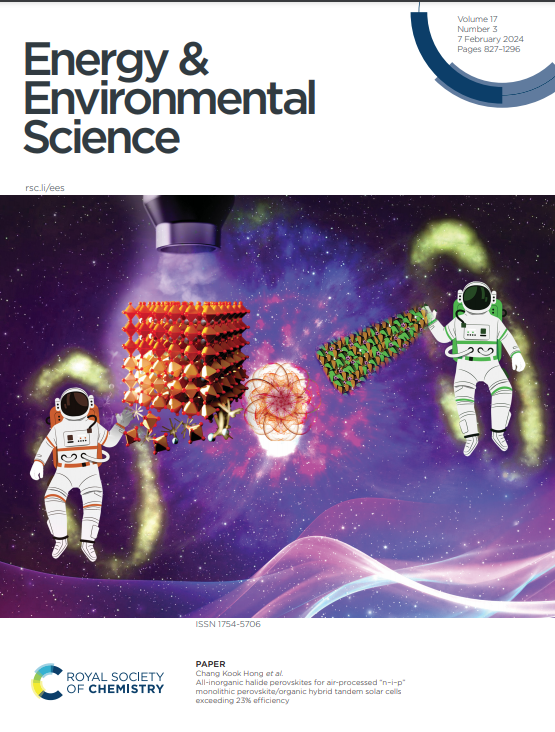Surface-confined Growth of Ru Amorphous Sub-nanoclusters on Reductive Mn3O4: A Strongly Coupled Interface Engineering for Efficient Neutral Hydrogen Production
IF 32.4
1区 材料科学
Q1 CHEMISTRY, MULTIDISCIPLINARY
引用次数: 0
Abstract
Electrochemical hydrogen evolution reaction (HER) under neutral condition is of great importance but remains challenging for achieving practical hydrogen production due to additional water dissociation and low proton supply rate. Herein, this work focuses on Ru amorphous sub-nanoclusters (Ru-ASNs), presenting an innovation that encompasses a surface-confined growth approach and a novel strongly coupled interface engineering strategy, wherein Ru-ASNs are grown on reductive Mn3O4 nanocrystals to form an interfacial catalyst (Ru-ASN/Mn3O4) for superior neutral HER. The strongly coupled effect induced by Ru-ASN on the heterostructure interface increases the proton supply rate by accelerating water dissociation at Mn sites as well as boost hydrogen migration at Ru sites, thus resulting in improved HER activity and stability under neutral conditions. The resulting electrocatalyst demonstrates low overpotentials of -8 mV at -10 mA cm-2 and -190 mV at -500 mA cm-2 only at low loading of 7 µgRu cm-2, a high mass activity of 8.78 A mgRu-1 at -70 mV, and maintains stability for over 600 hours at -250 mA cm-2, representing the highest mass activity of Ru-based electrocatalysts and longest durability under neutral conditions. This work demonstrates the superiority of amorphous sub-nanoclusters in constructing a strongly coupled interface for developing advanced catalysts.求助全文
约1分钟内获得全文
求助全文
来源期刊

Energy & Environmental Science
化学-工程:化工
CiteScore
50.50
自引率
2.20%
发文量
349
审稿时长
2.2 months
期刊介绍:
Energy & Environmental Science, a peer-reviewed scientific journal, publishes original research and review articles covering interdisciplinary topics in the (bio)chemical and (bio)physical sciences, as well as chemical engineering disciplines. Published monthly by the Royal Society of Chemistry (RSC), a not-for-profit publisher, Energy & Environmental Science is recognized as a leading journal. It boasts an impressive impact factor of 8.500 as of 2009, ranking 8th among 140 journals in the category "Chemistry, Multidisciplinary," second among 71 journals in "Energy & Fuels," second among 128 journals in "Engineering, Chemical," and first among 181 scientific journals in "Environmental Sciences."
Energy & Environmental Science publishes various types of articles, including Research Papers (original scientific work), Review Articles, Perspectives, and Minireviews (feature review-type articles of broad interest), Communications (original scientific work of an urgent nature), Opinions (personal, often speculative viewpoints or hypotheses on current topics), and Analysis Articles (in-depth examination of energy-related issues).
 求助内容:
求助内容: 应助结果提醒方式:
应助结果提醒方式:


